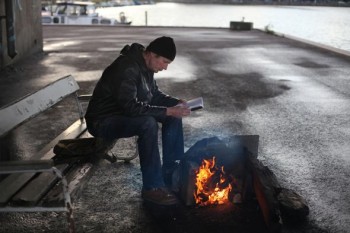Author: Soila Lehtonen
Olli Jalonen: Karatolla
14 September 2012 | Mini reviews, Reviews
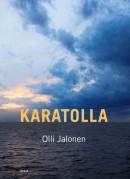 Karatolla
Karatolla
Helsinki, Otava, 2012. 238 p.
ISBN 978-951-1-26469-9
€34.10, hardback
Karatolla is a Finnish dialect word for a bonfire that is lit at New Year or Easter. One of the main characters in Olli Jalonen’s new novel (his twenty-first publication to date) is an artist called Valo, ‘Light’. By the fires of his youth he has come to learn that the world is composed of nine basic elements: fire, smoke, light, earth, water, snow, ice, air, and time. At the beginning of the twenty-first century Valo and his colleague the architect Silla set out to construct a major European art work in which pyramids built of the above-mentioned elements are assembled in Prague, Brussels, Santiago de Compostela, Krakow, Reykjavik, Bergen, Helsinki, Avignon and Bologna respectively. In this novel Jalonen (born 1954) develops themes from his previous novel Yhdeksän pyramidia (‘Nine pyramids’), published in 2000: the events have moved forward ten years. When the project is completed, a nascent love affair between Light and Silla ends when Light falls victim to a fatal illness. Jalonen’s narrative is fascinating; the construction of pyramids, the cities in which they are constructed and the characters are portrayed with great skill, developing themes of artistry, honesty and the fragility of love. Much open space is left for the reader’s thoughts and imagination.
Translated by David McDuff
Christer Lindgren: Stadin klassikot. Maukkainta retroruokaa [City classics. The tastiest retro fare]
18 May 2012 | Mini reviews, Reviews
 Stadin klassikot. Maukkainta retroruokaa
Stadin klassikot. Maukkainta retroruokaa
[City classics. The tastiest retro fare]
Helsinki: Teos, 2012. 135 p., ill.
ISBN 978-951-851-433-9
€32.90, hardback
Even a small metropolis like Helsinki has a few restaurants that have survived the changes of time by sticking to traditional dishes. This book features Sea Horse, Elite, Kosmos and Kolme Kruunua (‘The Three Crowns’), established in 1934, 1932, 1924 and 1928 respectively. Their interiors – stylish art deco and functionalism – date from the 1920s and 1930s. A Sea Horse specialty, fried Baltic herrings, 16 per portion, delighted trumpetist Dizzy Gillespie so much that he ate his, his Finnish host’s and half of a fellow guest’s. The most popular recipes have been influenced by food cooked to the east, north and west (Russia, Lapland, Sweden) and mainly feature meat, fish, poultry and potatoes – cooked with plenty of butter and cream. These restaurants were – and are – frequented by politicians and artists of various fields, so the recipes include ‘Tauno Palo’s cream onion steaks’ or ‘Cod Mannerheim’. It is unfortunate that only the recipes have been translated, not the little stories about the restaurants, so an English reader has no idea who Tauno Palo was (1908–1982; the Finnish equivalent of Cary Grant). The translations sometimes go amiss: a recipe entitled ‘Sautéed reindeer’ first lists a kilo of ‘sautéed reindeer’, when it should of course list ‘a kilo of sliced reindeer meat’. The photos have been shot in situ, so the dishes look nicely authentic.
Tuomas Kyrö: Mielensäpahoittaja ja ruskeakastike [Taking offence: brown sauce]
25 April 2012 | Mini reviews, Reviews
 Mielensäpahoittaja ja ruskeakastike
Mielensäpahoittaja ja ruskeakastike
[Taking offence: brown sauce]
Helsinki: WSOY, 2012. 130 p., ill.
ISBN 978-951-0-39079-5
€23.90, hardback
The most popular book by Tuomas Kyrö (born 1974), so far, has been his sixth novel, Mielensäpahoittaja (‘Taking offence’: literally ‘He who takes offence’, 2010). It has sold nearly 65,000 copies as a book and audiobook. The protagonist is a 80-something man, a sturdy old bear who lives in the countryside, now alone, because his demented wife has been taken into care and the children have long since left home. Kyrö inserts genuine humour into the monologues of his stubborn – but by no means simple – character, defiantly critical, opposing new gadgets, fads and all sorts of silly stuff of the contemporary society. In this sequel Kyrö still manages to entertain the reader with his detailed portrait: now Mr Grumpy has to learn to cook, because the food a paid helper brings in just isn’t good enough. With the potato as the cornerstone of his diet, he finally learns how to make good, fatty and salty meals of meat and veg. ‘One must remember what’s important in life, marriage and prostate problems. Time and patience.’ Illustrations remind the reader of the old times: photographs of television programmes and printed recipes from the 1960s and 1970s.
Markku Kuisma & al.: Hulluja päiviä, huikeita vuosia. Stockmann 1862–2012 [Crazy days, amazing years. Stockmann 1862–2012]
29 March 2012 | Mini reviews, Reviews
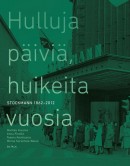 Markku Kuisma & Anna Finnilä & Teemu Keskisarja & Minna Sarantola–Weiss
Markku Kuisma & Anna Finnilä & Teemu Keskisarja & Minna Sarantola–Weiss
Hulluja päiviä, huikeita vuosia. Stockmann 1862–2012
[Crazy days, amazing years. Stockmann 1862–2012]
Helsinki: Siltala, 2012. 532 p., ill.
ISBN 978-952-234-086-3
€37.90, hardback
Also available in English- and Swedish-language editions:
Crazy days, amazing years. Stockmann 1862–2012
Galna dagar, svindlande tider. Stockmann 1862–2012
The largest department store in the Nordic countries, whose current building was completed in 1930 to a design by the architect Sigurd Frosterus, is celebrating its 150th birthday. The Akateeminen Kirjakauppa (Academic Bookstore), owned by Stockmann, is the biggest bookshop in the Nordic countries. The shop founded by the German-born H.F.G. Stockmann has grown into an international business, trading in 14 countries (including Russia, where it has stores in St Petersburg and Moscow). Now quoted on the Finnish stock exchange, Stockmann, owned by a conglomerate of families and foundations, has survived recessions, financial crises and wars. In the 19th century Stockmann was considered an expensive shop for gentlefolk, but as a result of growing competition it has been forced to focus strongly on a diverse concept of service. For decades one of the capital’s best-known meeting places has been ‘under the clock’, outside the main entrance of the department store. The book’s writers are historians from various fields. The generously illustrated work offers new information about the history of trade and the city.
C.L. Engel. Koti Helsingissä, sydän Berliinissä. C.L. Engel. Hemmet i Helsingfors, hjärtat i Berlin [C.L. Engel. Home in Helsinki, heart in Berlin]
23 February 2012 | Mini reviews, Reviews
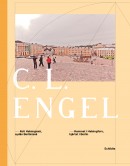 C.L. Engel. Koti Helsingissä, sydän Berliinissä. C.L. Engel. Hemmet i Helsingfors, hjärtat i Berlin
C.L. Engel. Koti Helsingissä, sydän Berliinissä. C.L. Engel. Hemmet i Helsingfors, hjärtat i Berlin
[C.L. Engel. Home in Helsinki, heart in Berlin]
Tekstit [Texts by]: Matti Klinge, Salla Elo, Eeva Ruoff
Valokuvat [Photography]: Taavetti Alin & Risto Törrö
Översättning [Translations from Finnish into Swedish]: Ulla Pedersen Estberg
Helsingfors: Schildts, 2012. 140 p., ill.
ISBN 978-951-50-2183-0
€ 31.50, hardback
The life and works of the German architect Carl Ludvig Engel (1778–1840) are portrayed in four articles by specialists in Finnish history, the history of Helsinki and the history of gardens. Engel spent almost 24 years in Helsinki, transforming it with his architectural designs. For eleven of those years, he and his family lived in a house surrounded by a large garden, both of them his own creations. Looking for work, the young Engel finally found it in the tiny northern town that was pronounced the new capital of the Grand Duchy of Finland in 1812 – both Tsar Alexander I and his successor, Nikolai I, favoured him. From 1816 onwards he designed more than twenty neo-classical buildings, among them nationally important landmarks: the Cathedral, the City Hall, the National Library and the University. Despite his mostly rewarding job as a highly regarded city planner, Engel found Helsinki cold, small and quiet, and he constantly longed for his native Berlin, which he never saw again. However, his flourishing garden gave him great pleasure. Richly illustrated with photographs, the book gives the reader an thorough and interesting picture of this city-changing man and his era.
Tero Tähtinen: Katmandun unet. Kirjoituksia idästä ja lännestä [Kathmandu dreams. Writings about East and West]
26 January 2012 | Mini reviews, Reviews
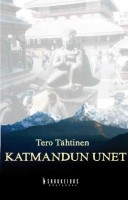 Katmandun unet. Kirjoituksia idästä ja lännestä
Katmandun unet. Kirjoituksia idästä ja lännestä
[Kathmandu dreams. Writings about East and West]
Turku: Savukeidas, 2011. 332 p.
ISBN 978-952-268-005-1
€ 19.90, paperback
Tero Tähtinen’s second collection of essays is focused physically in the wilds of a Finnish national park and Nepal – where the author (born 1978), a literary scholar and critic, has frequently travelled – and mentally in the divergences of Western and Eastern thought, which Tähtinen, who is familiar with Zen and Buddhist philosophy, studies, occasionally by means of literary examples. The ‘Socratic ego’ of the Western egocentric, individual ‘I’, which strives in vain to understand the whole of reality by rationalising it, is his favourite bête noire. Tähtinen quickens the pace of his verbal virtuosity as he discusses both dogmatic, materialistic faith in science – as well as some of its representatives – and Christian faith: he considers that both, in their pursuit of an absolute and total explanation, end up in a metaphysical vacuum. Unlike them, Eastern philosophy, in which the individual ‘I’ is not the centre and measure of all things, does not give rise to the anxiety of compulsive cognition. The virtual narcissism of Facebook, a platform tailor-made for the Socratic ego, receives Tähtinen’s outright condemnation: ‘Facebook trivialises humanity,’ he declares. At the end of these passionate essays on the author praises silence.
Translated by David McDuff
Jani Kaaro: Evoluutio [Evolution]
18 January 2012 | Mini reviews, Reviews
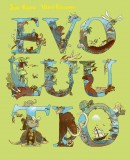 Evoluutio
Evoluutio
[Evoluutio]
Kuvitus [Ill. by]: Väinö Heinonen
Helsinki: BTJ Finland Oy/ Avain, 2011. 64 p., ill.
ISBN 978-951-692-766-7
€ 19.90, hardback
This non-fiction book, intended for 8- to 14-year-olds, takes as its main character Charles Darwin, who as a child begins to ponder where people came from. Various myths about the origins of the world, achievements of European natural historians and problems of early evolutionary theorists are explored briefly but elucidatingly; they are linked to the acquisition of new knowledge as the church fathers continue to trust in the Bible. The prehistory of the Earth, evolution and natural selection, animal populations, man and his ancestors are explained with the aid of plentiful and humorous illustrations. Scientific results are interestingly presented, but a separate fact box, for example, on the structure of the cell or the nature of DNA might have been useful. In the last picture, the 200,000-year-old Homo sapiens is seen scrawling his cave paintings: ‘so long as we are genetically unique individuals, our evolution will never cease’.
Translated by Hildi Hawkins
Helene Schjerfbeck. Och jag målar ändå [Helene Schjerfbeck. And I still paint]
16 December 2011 | Mini reviews, Reviews
 Helene Schjerfbeck. Och jag målar ändå. Brev till Maria Wiik 1907–1928
Helene Schjerfbeck. Och jag målar ändå. Brev till Maria Wiik 1907–1928
[Helene Schjerfbeck. And I still paint. Letters to Maria Wiik 1907–1928]
Utgivna av [Edited by]: Lena Holger
Helsingfors: Svenska Litteratursällskapet i Finland; Stockholm: Bokförlaget Atlantis, 2011. 301 p., ill.
ISBN (Finland) 978-951-583-233-7
ISBN (Sweden) 978-91-7353-524-3
€ 44, hardback
In Finnish:
Helene Schjerfbeck. Silti minä maalaan. Taiteilijan kirjeitä
[Helene Schjerfbeck. And I still paint. Letters from the artist]
Toimittanut [Edited by]: Lena Holger
Suomennos [Translated by]: Laura Jänisniemi
Helsinki: Suomalaisen Kirjallisuuden Seura, 2011. 300 p., ill.
ISBN 978-952-222-305-0
€ 44, hardback
This work contains a half of the collection of some 200 letters (owned by the Signe and Ane Gyllenberg’s foundation), until now unpublished, from artist Helene Schjerfbeck (1862–1946) to her artist friend Maria Wiik (1853–1928), dating from 1907 to 1928. They are selected and commented by the Swedish art historian Lena Holger. Schjerfbeck lived most of her life with her mother in two small towns, Hyvinge (in Finnish, Hyvinge) and Ekenäs (Tammisaari), from 1902 to 1938, mainly poor and often ill. In her youth Schjerfbeck was able to travel in Europe, but after moving to Hyvinge it took her 15 years to visit Helsinki again. In these letters she writes vividly about art and her painting, as well as about her isolated everyday life. Despite often very difficult circumstances, she never gave up her ambitions and high standards. Her brilliant, amazing, extensive series of self-portraits are today among the most sought-after north European paintings; she herself stayed mostly poor all her long life. The book is richly illustrated with Schjerfbeck’s paintings (mainly from the period), drawings and photographs.
Kari-Paavo Kokki: Tuolit, sohvat ja jakkarat. Renessanssista 1920-luvulle [Chairs, sofas and stools. From the renaissance to the 1920s]
24 November 2011 | Mini reviews, Reviews
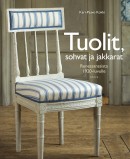 Tuolit, sohvat ja jakkarat. Renessanssista 1920-luvulle
Tuolit, sohvat ja jakkarat. Renessanssista 1920-luvulle
[Chairs, sofas and stools. From the renaissance to the 1920s]
Photographs: Katja Hagelstam
Helsinki: Otava, 2011. 175 p., ill.
ISBN 978-951-1-23415-9
€56, hardback
Could it be that chairs are the most important pieces of furniture in our daily lives? The history of furniture in Finland – not much has survived from earlier than late 16th century – is made up of Swedish, Russian and Finnish parts. Furniture-making in the Kingdom of Sweden, of which Finland formed a part until 1809, was modelled on European trends, and that was also the case in St Petersburg – which is close to Finland – during the period when Finland became a Russian-governed Grand Duchy (1809–1917). Finnish peasant furniture has always been of high quality, despite often harsh circumstances. Finnish furniture-makers adapted both Swedish and Russian styles; for example, Empire (in England, Regency) and Biedermeier chairs were either of the Russian or the Swedish type. Gustavian furniture (c. 1775–1810), from the period of King Gustav III, was popular and abundant, and in the past decades the style has become extremely favoured by collectors. Detailed, beautiful photography in this book supports the concise, informative text. Kari-Paavo Kokki, director of Heinola City Museum, is an antiques specialist.
In memoriam Herbert Lomas 1924–2011
23 September 2011 | In the news

Herbert Lomas. Photo: Soila Lehtonen
Herbert Lomas, English poet, literary critic and translator of Finnish literature, died on 9 September, aged 87.
Born in the Yorkshire village of Todmorden, Bertie lived for the past thirty years in the small town of Aldeburgh by the North Sea in Suffolk. (Read an interview with him in Books from Finland, November 2009.)
After serving two years in India during the war, Bertie taught English first in Greece, then in Finland, where he settled for 13 years. His translations – as well as many by his American-born wife Mary Lomas (died 1986) – were published from as early as 1976 in Books from Finland.
Bertie’s first collection of poetry (of a total of ten) appeared in 1969. His Letters in the Dark (1986) was an Observer book of the year, and he was the recipient of several literary prizes. His collected poems, A Casual Knack of Living, appeared in 2009.
In England Bertie won the Poetry Society’s 1991 biennial translation award for one of his anthologies, Contemporary Finnish Poetry. The Finnish government recognised his work in making Finnish literature better known when it made him a Knight First Class of Order of the White Rose of Finland in 1987.
To Books from Finland, he made an invaluable contribution over almost 35 years – an incredibly long time in the existence of a small literary magazine. The number of Finnish authors and poets whose work he made available in English is countless: classics, young writers, novelists, poets, dramatists.
Bertie’s speciality was ‘difficult’ poets, whose challenge lay in their use of end-rhymes, special vocabulary, rhythm or metre. He loved music, so the sounds and tones of words, their musicality, were among the things that fascinated him. Kirsi Kunnas’ hilarious, limerick-inspired children’s rhymes were among his best translations – although actually nothing in them would make the reader think that the originals might not have been written in English. A sample: There once was a crane / whose life was led / as a uniped. / It dangled its head / and from time to time said:/ It would be a pain / if I looked like a crane. (From Tiitiäisen satupuu, ‘Tittytumpkin’s fairy tree’, 1956, published in Books from Finland 1/1979.)
Bertie also translated work by Eeva-Liisa Manner, Paavo Haavikko, Mirkka Rekola, Pentti Holappa, Ilpo Tiihonen, Aaro Hellaakoski and Juhani Aho among many, many others; for example, the prolific writer Arto Paasilinna’s best-known novel, Jäniksen vuosi / The Year of the Hare, appeared in his translation in 1995. Johanna Sinisalo’s unusually (in the Finnish context) non-realist troll novel Ennen päivänlaskua ei voi / Not Before Sundown, subsequently translated into many other languages, appeared in 2003. His last translation for Books from Finland was of new poems by Vilja-Tuulia Huotarinen in 2009.
It was always fun to talk with Bertie about translations, language(s), writers, books, and life in general. He himself said he was a schoolboy at heart – which is easy to believe. He was funny, witty, inventive, impulsive, sometimes impatient – and thoroughly trustworthy: he just knew how to find the precise word, tone of voice, figure of speech. He had perfect poetic pitch. As dedicated and incredibly versatile translators are really hard to find anywhere, we all realise our good fortune – both for Finnish literature and for ourselves – to have worked, and enjoyed with such enjoyment, with Bertie.
Poet Aaro Hellaakoski (1893–1956) was not a self-avowed follower of Zen, but his last poems, in particular, show surprisingly close contacts with the philosophy. ‘Secrets of existence are revealed once one ceases seeking them’, the literary scholar Tero Tähtinen wrote in an essay published alongside Bertie’s new Hellaakoski translations in (the printed) Books from Finland (2/2007). Bertie was fond of Hellaakoski, whose existential verses fascinated him; among his 2007 translations is The new song (from Vartiossa, ‘On guard’, 1941):
The new song |
Uusi laulu |
| No compulsion, not a sting. | Ei mitään pakota, ei polta. |
| My body doesn’t seem to be. | On ruumis niinkuin ei oisikaan. |
| As if a nightbird started to sing | Kuin alkais kaukovainioilta |
| its far shy carol from some tree – | yölintu arka lauluaan |
| as if from its dim chrysalis | kuin hyönteistoukka heräämässä |
| a little grub awoke to bliss – | ois kotelossaan himmeässä |
| or someone struck from off his shoulder | kuin hartioiltaan joku loisi |
| a miserable old bugaboo – | pois köyhän muodon entisen |
| and a weird flying creature | ja outo lentäväinen oisi |
| stretched a fragile wing and flew. | ja nostais siiven kevyen. |
| Ah limitless bright light: | Oi kimmellystä ilman pielen. |
| the gift of lyrical flight! | Oi rikkautta laulun kielen. |
Tchotchkes for the tsar
11 August 2011 | Reviews
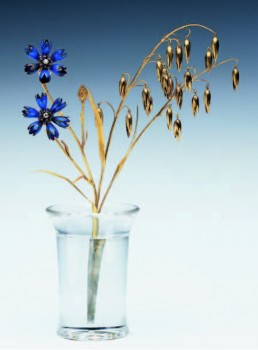
Cornflower and ear of oats: one of the several Fabergé gemstone ornaments now owned by Queen Elizabeth of England (gold, rock crystal, diamonds, enamel, ca 18 cm)
Ulla Tillander-Godenhielm
Fabergén suomalaiset mestarit
[Fabergé’s Finnish masters]
Design: Jukka Aalto/Armadillo Graphics
Helsinki: Tammi, 2011. 271 p., ill.
ISBN 978-951-31-5878-1
€57, hardback
In its online shop, the Hermitage Museum in St Petersburg sells a copy of a most delicate, enchanting little nephrite-and-opal lily of the valley that perfectly imitates nature, sitting in a vase made of rock crystal that looks like a glass of water.
These small flowers made of gold and gemstones were manufactured by the jeweller Fabergé a hundred years ago. The lily of the valley was the most frequently used floral motif in the Fabergé workshops – it was the favourite flower of Empress Alexandra (1872–1918), and the imperial family was the the foremost client of the world’s foremost jeweller.
The replica (13.5 centimetres high) is available at the Hermitage as a ‘luxury gift’ for the price of mere $3,300. (N.B. Since we published this review, the ‘luxury gift’ items seem to have disappeared from the Hermitage online shop selection, so we have removed the link. Several Fabergé egg replicas are available though, ranging in price from $200 upwards – link below.)
For those who feel the price is excessive, there is also a rather modestly-priced little bay tree (original: gold, Siberian nephrite, diamonds, amethysts, pearls, citrines, agates and rubies as well as natural feathers, about 30 centimetres tall, featuring a little bird that emerges flapping its wings and singing when a small key is turned) at just $ 219,95. Despite its form, it is classified as one of the famous imperial Easter eggs. (However, as I write, this item is unfortunately sold out…) More…
Praise and prize for theatre on the edge of Europe
29 April 2011 | In the news
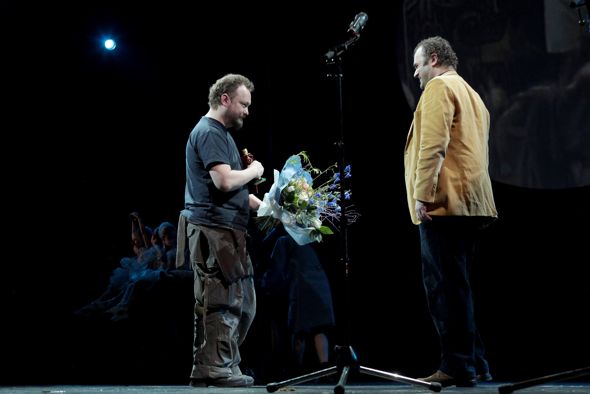
Kristian Smeds is awarded the XII Europe Prize of New Theatrical Realities in St Petersburg on 17 April, presented by a previous prize-winner, Italian theatremaker Pippo Delbono. Photo: rossetti/phocusagency
Theatremaker Kristian Smeds (born 1970) was awarded the XII Europe Theatre Prize for New Theatrical Realities in St Petersburg on 17 April. The prize, worth 30,000 euros, was – this time – divided between six prominent theatremakers or theatre groups. (For more information, see the Premio Europa website.)
The international prize jury consists of representatives of many institutions of the field. Since 1986 the main prize, the Europe Theatre Prize (worth 60,000 euros), has been awarded to 14 European theatremakers considered influential – among them, the directors and/or writers Ariane Mnouchkine, Peter Brook, Heiner Müller, Lev Dodin, Harold Pinter, and now, the German director Peter Stein. More…

